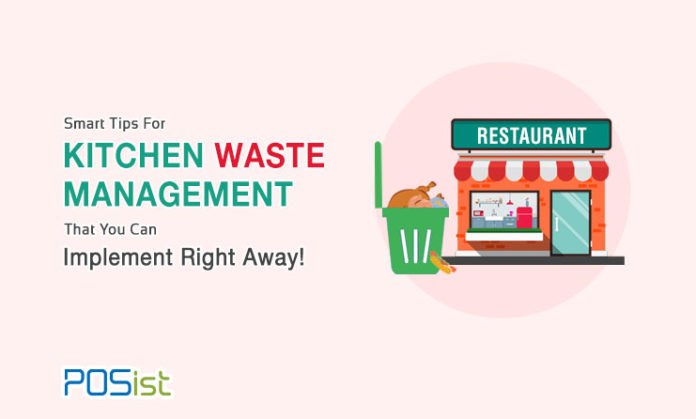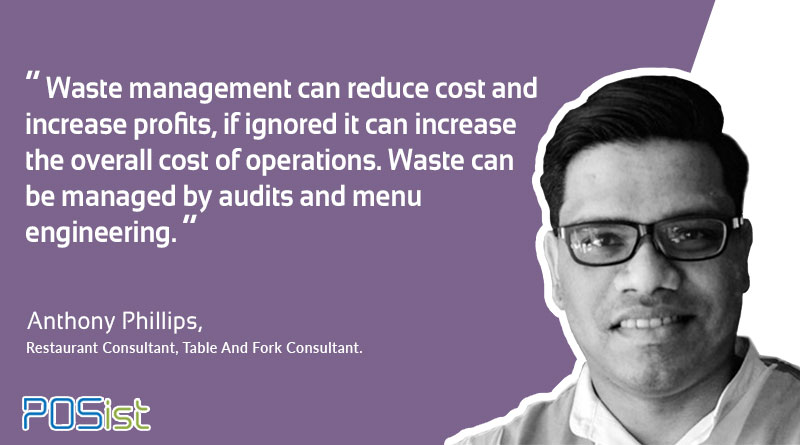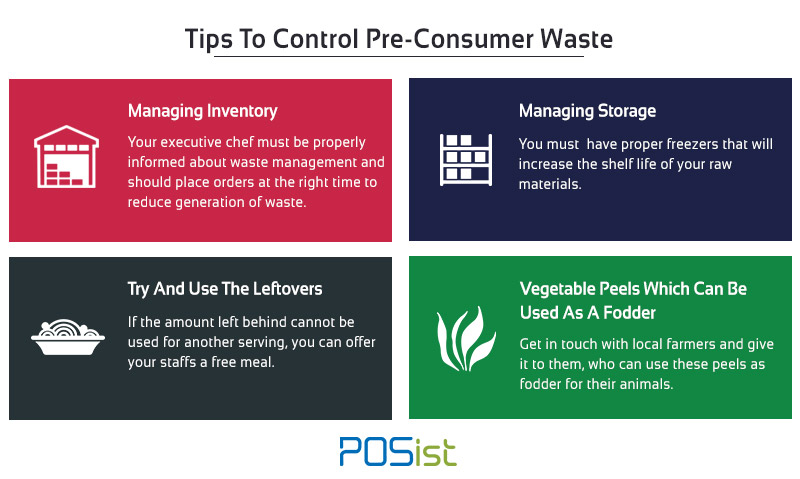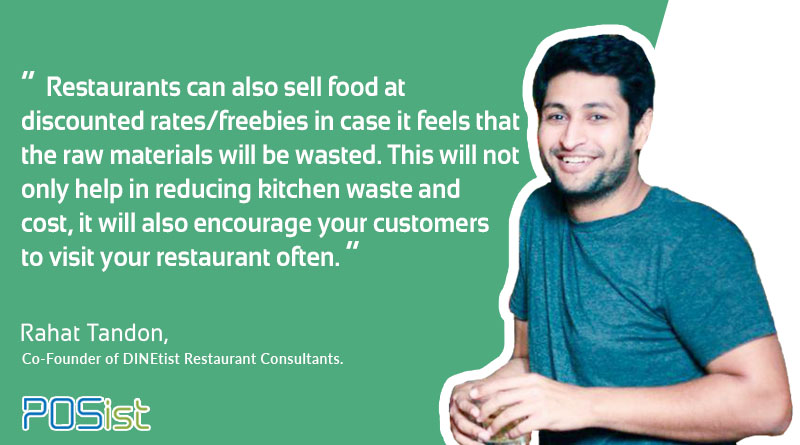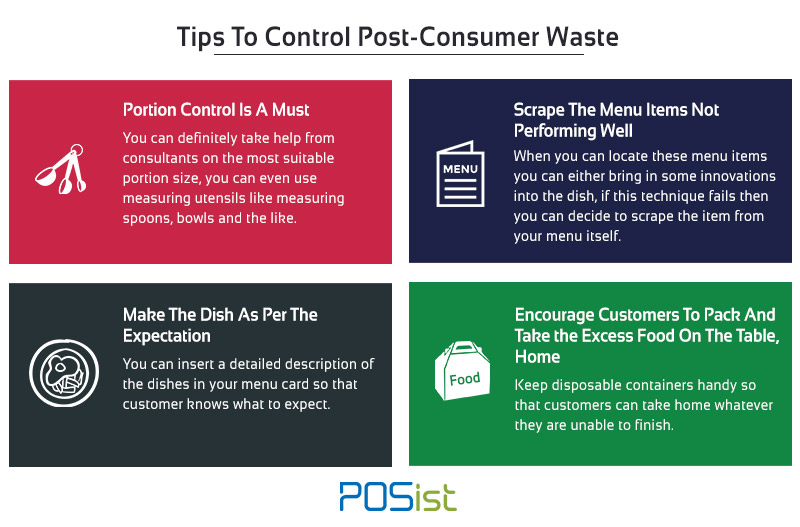While taking all the steps to ensure higher revenue and profit margins, restaurateurs often ignore a critical aspect of restaurant operations: kitchen waste management. Now, there are two aspects to kitchen waste management; the first is to ensure that minimal waste is generated at your restaurant. You can achieve this restaurant waste management goal through techniques like proportioning and recipe standardization. However, you cannot avoid some food wastage. Hence comes the second part of kitchen waste management, and that is recycling and responsibly disposing of the waste. In this article, we’ll discuss the importance of restaurant kitchen waste management in a restaurant and how you should achieve it.
Why You Need To Employ Kitchen Waste Management In Restaurants
The primary reasons why kitchen waste management is essential in your restaurants are:-
- Not managing your kitchen waste will cost you extra money
- Restaurant waste if not handled will impact the environment in a negative way
1. Ignoring Kitchen Waste Management Costs You Money
Lack of restaurant kitchen waste management is one of the leading hidden reasons behind escalating food costs. You buy raw materials with money; hence if your kitchen ends up generating large amounts of waste, then it is you who is losing out on the money.
For example, if you are unaware of how many customers visit your restaurant on a daily basis, and your kitchen staff while prepping for the day chops double the required amount of vegetables, then either you will have to store the excess and use it the next day, or it goes into the dustbin. Either way, you are at a loss.
2. Lack Of Restaurant Waste Management Practices Impact The Environment In A Negative Way
Food waste is increasingly becoming a growing area of concern for our community in terms of waste collection, disposal, and greenhouse gases. When rotting food in your restaurant ends up in a landfill, it turns into methane, a greenhouse gas that is particularly damaging to the environment.
Food waste not only damages the environment; it also wastes the valuable water and energy resources used to produce food. Customers are also now moving towards more eco-friendly alternatives, and a restaurant is no different when it comes to making dining choices. A green restaurant that is making conscientious decisions towards recycling and reducing waste gets bonus points.
Top Kitchen Waste Management Techniques That You Must Swear By!
Kitchen waste management has become a growing concern so much so that, there has been a buzz around the media on this. The Times of India reached out to various restaurant owners to know the techniques of kitchen waste management they implement. The answers ranged from the reuse of leftovers, feeding their staff to hiring an in-house food controller to check the spoilage and wastage of food.
Knowing that kitchen waste management is essential for all restaurants, we here would guide and point out the various techniques which you can quickly implement that will ensure that you are generating minimum waste in your restaurant and responsibly dispose of the trash.
1. Educate Your Staff
Unless your staff is aware of the negative impacts of kitchen waste management, then how will they realize the gravity of the situation and act responsibly to curb the generation of the waste? Hence, your first step toward controlling kitchen waste is to educate your staff on how to prepare the dishes. If you have a recipe management system in your restaurant, ensure that your team strictly follows the quantities of items mentioned.
You, as a restaurant owner, can ask your manager to provide training and a detailed manual to all your new staff, and also to schedule a periodical session to refresh the memory of your already existing staff on kitchen waste management techniques.
2. Create a Food Waste Audit
Unless you know where food waste is generated, how will you try and control it? Hence, your first step should be to identify where food waste is produced and how much. The best way to keep a count of how much waste is generated is by managing a waste sheet.
Waste includes food items or drinks made incorrectly. Thus a waste sheet should consist of the name of the ingredient wasted, the reason for wastage, the quantity of the waste material, and the cost of the item. Following this method will ensure that you have put down your finger on the focal point from where food waste is generated.
You must also consider the waste generated at customer tables. This is generally called the post-consumer waste or the food the customers pay for but don’t eat. This could be for any reason; either the quantity was too much, or a kid refused to eat the item ordered by the mother or, they expected a different type of dish while ordering, hence left it untouched at the table.
However, you can hardly control the behavior of the customers, keep track of the waste generated from the customers’ end will help you evaluate the changes that need to be brought forth from the restaurant’s end that will help to reduce the generation of kitchen waste.
3. How To Reduce The Generation Of Kitchen Waste
Once you know which items are wasted and how much, you can move to the next step on how to reduce the generation of kitchen waste. The best way to go ahead with this is to use the right restaurant kitchen equipment for food preparation and divide the waste generated into categories.
(i) Pre-Consumer Waste
These are those items that do not even get a chance to come out of the kitchen. This is one such domain where you can act and expect very positive returns as there are many aspects of pre-consumer wastes that you can control.
- Managing Inventory and Storage: Do you see that there are items that are getting spoilt even before they are used in the kitchen? If so, then make sure that you don’t order the items in excess. Managing your inventory well is an art, make sure your executive chef is adequately informed about your inventory management practices and orders raw materials at the right time to avoid wastage.
In addition to this, you must have proper storage facilities. Not having well-functioning freezers can be another reason why your raw materials are getting spoilt. Every item has a different storing temperature, make sure that you do proper research on them. This will increase the shelf life of the raw materials. You can also put labels on your items, that would act as a reminder that those items will be of no use very soon. - Try And Use The Leftovers: The chefs in your kitchen must have a creative mind to use yesterday’s leftovers as a new innovative addition to an already existing dish, or a piece of garnish. Such little innovations will not cost you much but will ensure that you are using your leftovers to the optimum level, and these sudden changes will keep your customers hooked to your restaurant.
If the amount left behind cannot be used for another serving, you can offer your staff a free meal. During lunch, you can discuss if your employees are facing any issues at work or if they have some ideas that can be incorporated, etc. This will not only ensure that your ingredients well used, but it will also make your staff feel needed.
If a considerable amount of food is left, but you cannot use it the next day because it is a national holiday or because you not operate for some days, you can get in touch with local NGOs and donate the food. This will ensure that excess food items are being used instead of getting wasted.
- Vegetable Peels which Can Be Used As A Fodder: Kitchen has a lot of vegetable peels, instead of throwing them in the dustbin, you can very well get in touch with local farmers and give it to them, who can use these peels as fodder for their animals.
(ii) Post-Consumer Waste
This waste is generated after the meals leave the kitchen. Although there is hardly anything that you can do to control customer behavior, there are some methods that you can follow to ensure that the generation of this type of waste is well under control.
- Portion Control Is A Must: If you see that there are a few dishes that your customers are unable to finish every time they order, you must get the hint that there are some issues. If there are no complaints about the taste, then you should understand that probably the portion size of the dish is too much to be finished. In such a situation, you must strategize on how to control your portion.You can take help from consultants on the most suitable portion size; you can even use measuring utensils like measuring spoons, bowls, and the like. This will ensure that you are not serving more or less than what is expected and thus are meeting your kitchen waste management goals.
- Scrape The Menu Items Not Performing Well: There have to be a few menu items that are either less ordered or not ordered at all. When you can locate these menu items, you can either bring in some innovations into the dish to attract the customers. If this technique fails, then you can decide to scrape the item off of your menu.
- Make The Dish As Per The Expectation: It is not new for customers to return their dish if they are unsatisfied with the taste or with the ingredients. In such a situation, your kitchen has no other option but to discard that rejected dish and prepare a new one. To avoid such situations that produce such wastage, you can insert a detailed description of the recipes on your menu card. This will prepare your customers, and they will expect accordingly.
Encourage Customers To Pack And Take the Excess Food On The Table, Home: If you see that there is a considerable amount of food that a customer is leaving behind, you can advise the customer to take the food back home. Keep disposable containers handy so that customers can take home whatever they are unable to finish. This will help in reducing the generation of kitchen waste to a great extent.
4. Tips On How You Should Get Rid of Disposables
There are a few items that cannot be consumed; this includes plastics, cans, disposable bottles as well. They also form an essential part of restaurant kitchen waste management. Instead of throwing them, which will add up to the garbage of the world, you can find effective ways that will reduce their negative impact on the environment.
Run Your Own Composting Program
If you can squeeze in a small area behind your restaurant or any part of the city and run your composting program, then nothing like it! Composting is a waste disposal treatment, which is the controlled aerobic decomposition of organic waste material, with the help of small invertebrates or microorganisms.
There are various techniques of composting as well; they are static pile composting, vermicomposting, windrow composting, and in-vessel composting. However, having your composting site might not always be a feasible idea. Hence, you can get in touch with a composter who will collect your disposables; all that you need to do is, separate the garbage into compostable and non-compostable waste.
To a restaurant owner, it is a daunting task to keep track of the kitchen waste generated and to try and spread the awareness of kitchen waste management amongst your staff. Mostly all restaurants create a large amount of waste, hence knowing the predicament of the situation, we have tried to discuss why is kitchen waste management is essential and how you can go ahead and implement it.


